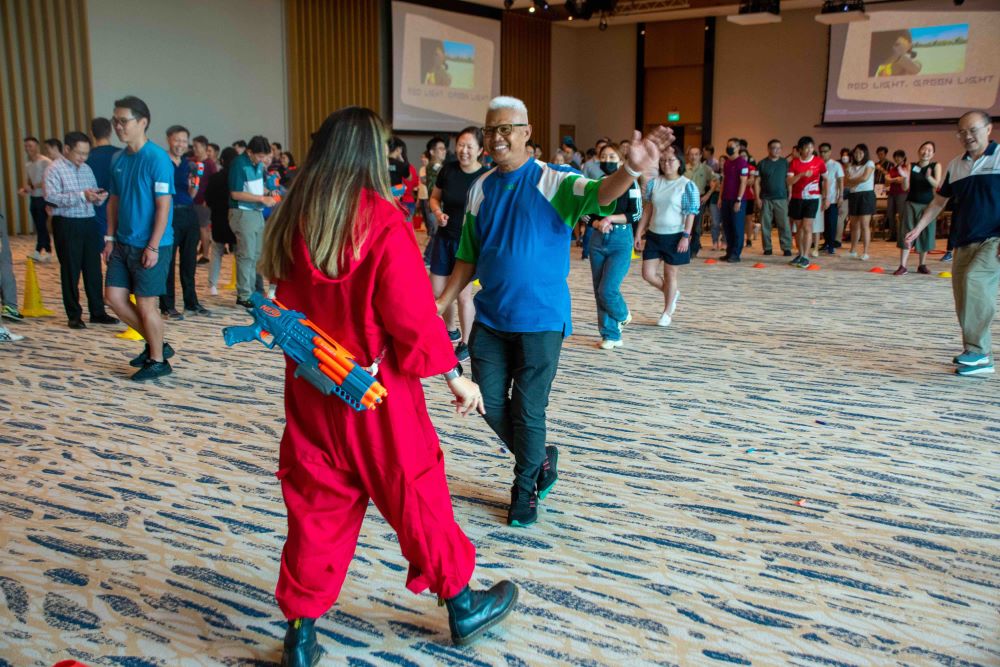AI Edition: Team Building Vs Team Bonding
In the realm of professional environments, the terms “team bonding” and “team building” often appear interchangeable, yet they entail distinct approaches and outcomes. Both are crucial components in fostering collaborative and productive teams, but they operate on different principles and yield varied results. Understanding the nuances between team bonding and team building is essential for leaders seeking to cultivate cohesive and high-performing teams.
Defining Team Bonding
Team bonding emphasizes the interpersonal relationships and connections among team members. It focuses on creating a sense of camaraderie, trust, and mutual respect within the team. Team bonding activities are designed to be enjoyable, non-work-related experiences that allow team members to interact in a relaxed setting.
Team bonding activities can range from social outings such as dinners, picnics, or team retreats to team-building games and exercises that encourage collaboration and communication. The primary goal of team bonding is to strengthen the emotional bonds and social cohesion among team members, which in turn can improve morale, communication, and overall team dynamics.
Understanding Team Building
Team building, on the other hand, is a more structured and intentional process aimed at enhancing specific skills and improving team performance. Unlike team bonding, which focuses on the social aspect of teamwork, team building activities are often task-oriented and designed to address particular challenges or goals facing the team.
Team building activities may include problem-solving exercises, role-playing scenarios, or experiential learning activities that require collaboration, decision-making, and conflict resolution skills. The emphasis is on developing the capabilities and effectiveness of the team as a whole, rather than solely on interpersonal relationships.
Key Differences
While team bonding and team building share the overarching goal of improving team dynamics, they differ significantly in their focus, objectives, and outcomes:
Focus: Team bonding centers on fostering personal connections and trust among team members, while team building concentrates on developing skills and enhancing team performance.
Objectives: The primary objective of team bonding is to create a positive and supportive team culture, whereas team building aims to improve problem-solving abilities, communication, and teamwork skills.
Outcomes: Team bonding activities often result in improved morale, increased trust, and stronger relationships among team members. Conversely, team building initiatives lead to enhanced collaboration, productivity, and performance outcomes.
Nature of Activities: Team bonding activities tend to be informal, social, and leisure-oriented, promoting relaxation and enjoyment among team members. In contrast, team building activities are more structured, task-focused, and designed to simulate real-world challenges encountered in the workplace.
Integration for Optimal Results
While team bonding and team building serve distinct purposes, they are not mutually exclusive. In fact, the most effective teams often incorporate elements of both approaches to maximize their potential. By combining social bonding experiences with targeted skill development activities, teams can cultivate a strong sense of unity, trust, and competence.
Leaders play a critical role in facilitating both team bonding and team building initiatives within their organizations. They must recognize the unique needs and dynamics of their teams and select activities that align with their objectives and challenges. Additionally, leaders should foster an environment that encourages open communication, collaboration, and continuous improvement among team members.
Conclusion
In conclusion, team bonding and team building are integral components of effective team development, each serving a distinct yet complementary role in fostering collaborative and high-performing teams. While team bonding nurtures interpersonal connections and trust, team building enhances skills and improves performance outcomes. By integrating both approaches strategically, organizations can create cohesive teams that thrive in today’s dynamic and competitive business environment.
To head back to read another article in our blog or for more tips on team building, click here.

